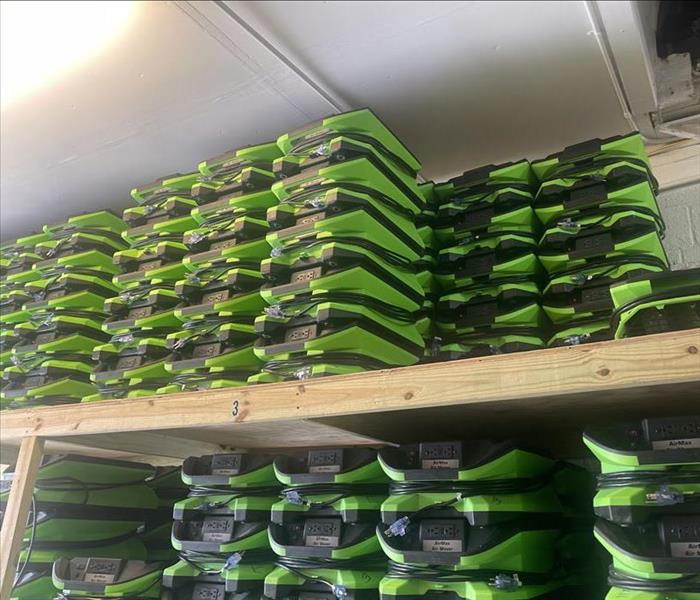Flood Barriers and Sandbags: Effective Techniques for Flood Defense
9/11/2024 (Permalink)
Flooding is one of the most devastating natural disasters, causing significant damage to homes, businesses, and infrastructure. As a SERVPRO® employee, I've seen firsthand the impact floods can have on communities. Fortunately, there are effective techniques to mitigate flood damage, with flood barriers and sandbags being two of the most reliable methods for flood defense.
Flood Barriers
Flood barriers, also known as flood walls, are specially designed structures that prevent water from entering protected areas. These barriers come in various forms, including temporary and permanent solutions. Temporary flood barriers, such as water-filled barriers or modular systems, are ideal for quick deployment during imminent flood threats. They are lightweight, easy to assemble, and can be placed strategically around homes or properties to divert water flow. Permanent flood barriers, on the other hand, are typically constructed from concrete or steel and offer long-term protection for high-risk areas. These barriers require more planning and investment but provide robust defense against recurrent flooding.
Sandbags
Sandbags are another widely used and effective method for flood control. They are inexpensive, readily available, and can be deployed quickly in emergency situations. Sandbags work by creating a barrier that absorbs and diverts water away from vulnerable areas. When filled with sand or soil, they form a solid wall that can hold back rising floodwaters. To maximize their effectiveness, it’s crucial to stack sandbags properly. Start by placing a plastic sheet or tarp on the ground to act as a moisture barrier. Then, stack the sandbags in a staggered brick pattern, ensuring each bag is tightly packed and overlaps the one below it. This method creates a more stable and impermeable barrier.
While sandbags are effective, they do have limitations. They are labor-intensive to fill, transport, and place, and they can deteriorate over time, especially when exposed to water for extended periods. Additionally, sandbags may not provide a perfect seal, allowing some water to seep through. For these reasons, combining sandbags with other flood defense measures, such as flood barriers or sump pumps, can enhance overall protection.
Preparedness
Preparation is key to effective flood defense. Assessing the flood risk in your area and having a flood defense plan in place can make a significant difference. Consider investing in both temporary and permanent flood barriers if you live in a high-risk area. Keep a stockpile of sandbags and other flood defense materials readily available, and practice deploying them with your family or neighbors to ensure everyone knows what to do when a flood threat arises.
At SERVPRO, we understand the importance of protecting your property from flood damage. By utilizing flood barriers and sandbags effectively, you can reduce the risk of flooding and safeguard your home or business. Remember, proactive measures and timely action are essential in minimizing the impact of floods. If you need assistance with flood preparation or recovery, SERVPRO is here for you.



 24/7 Emergency Service
24/7 Emergency Service
